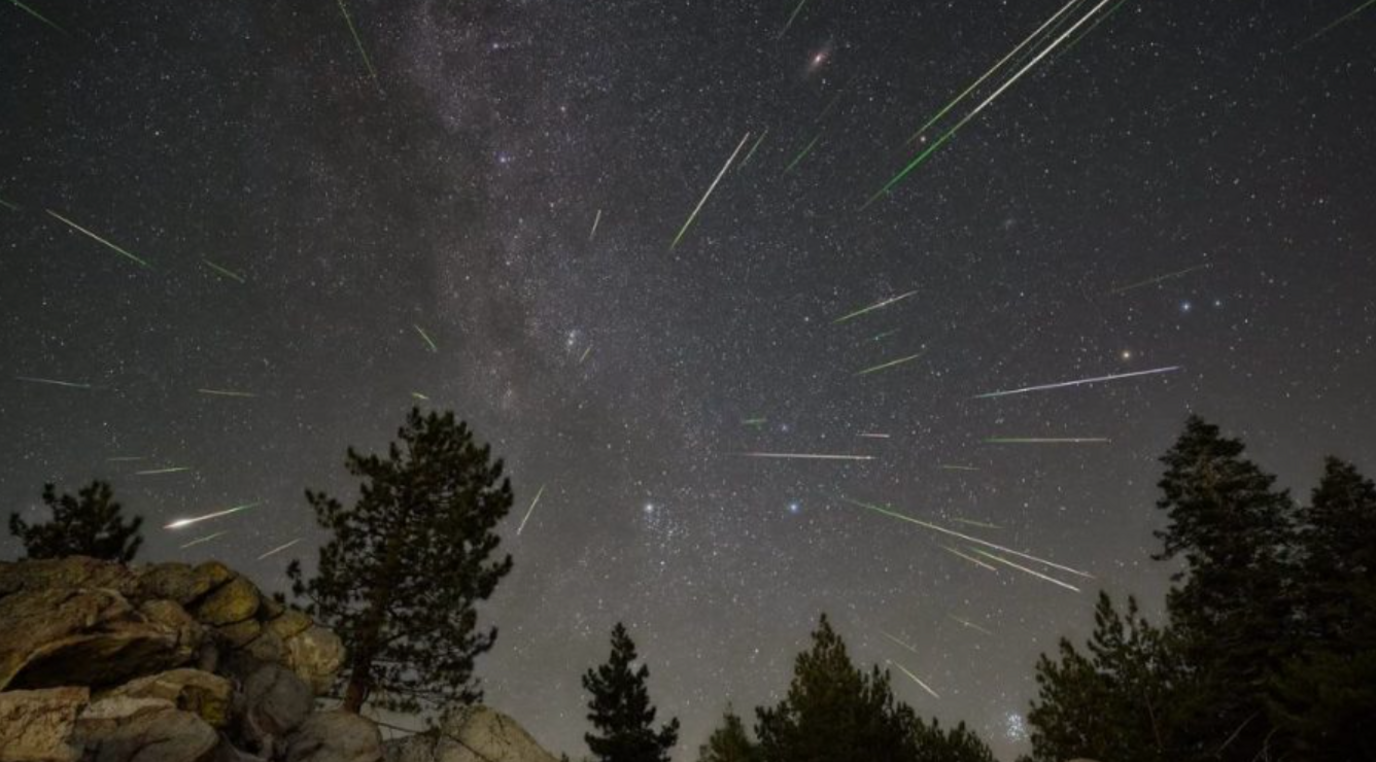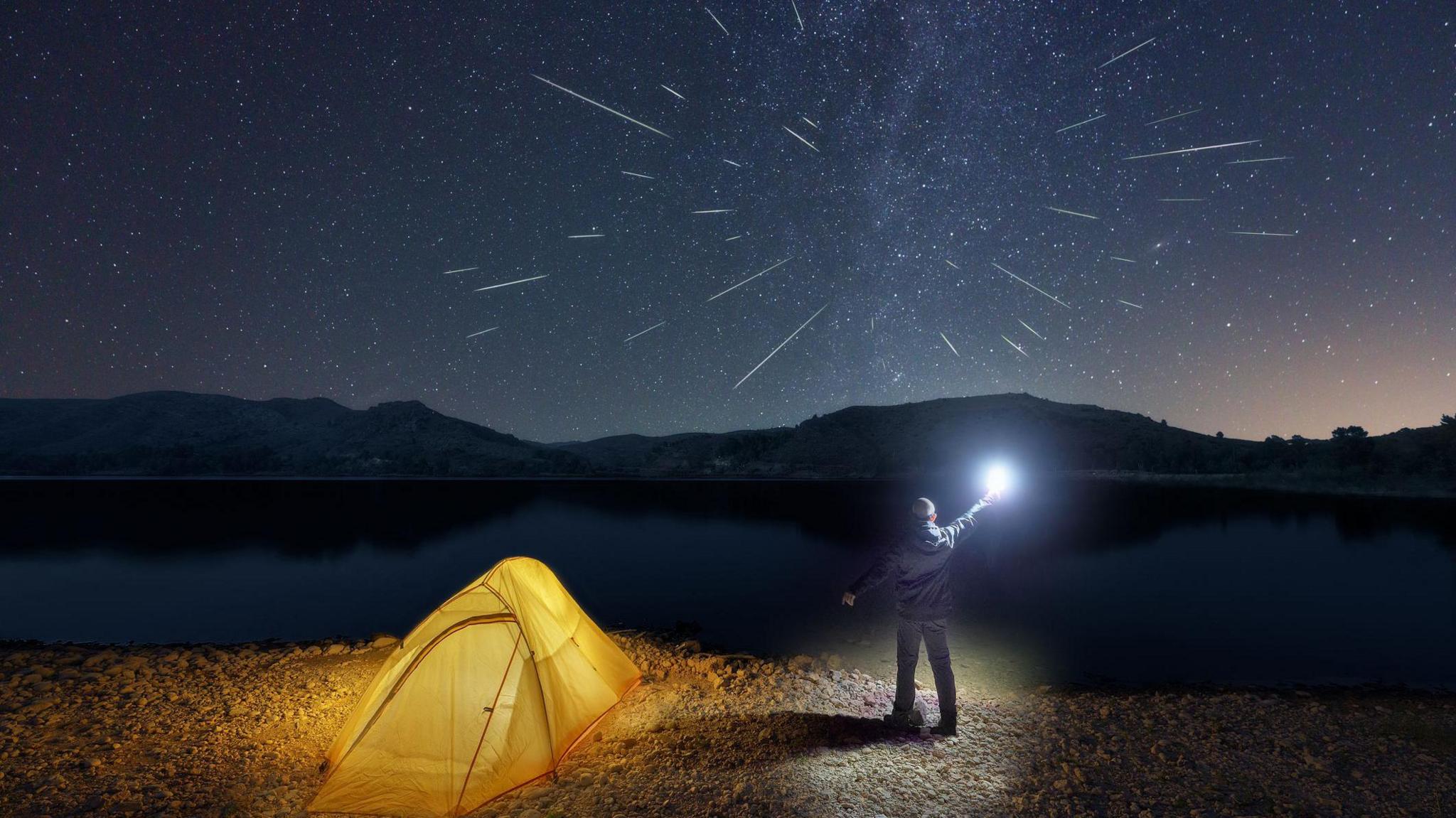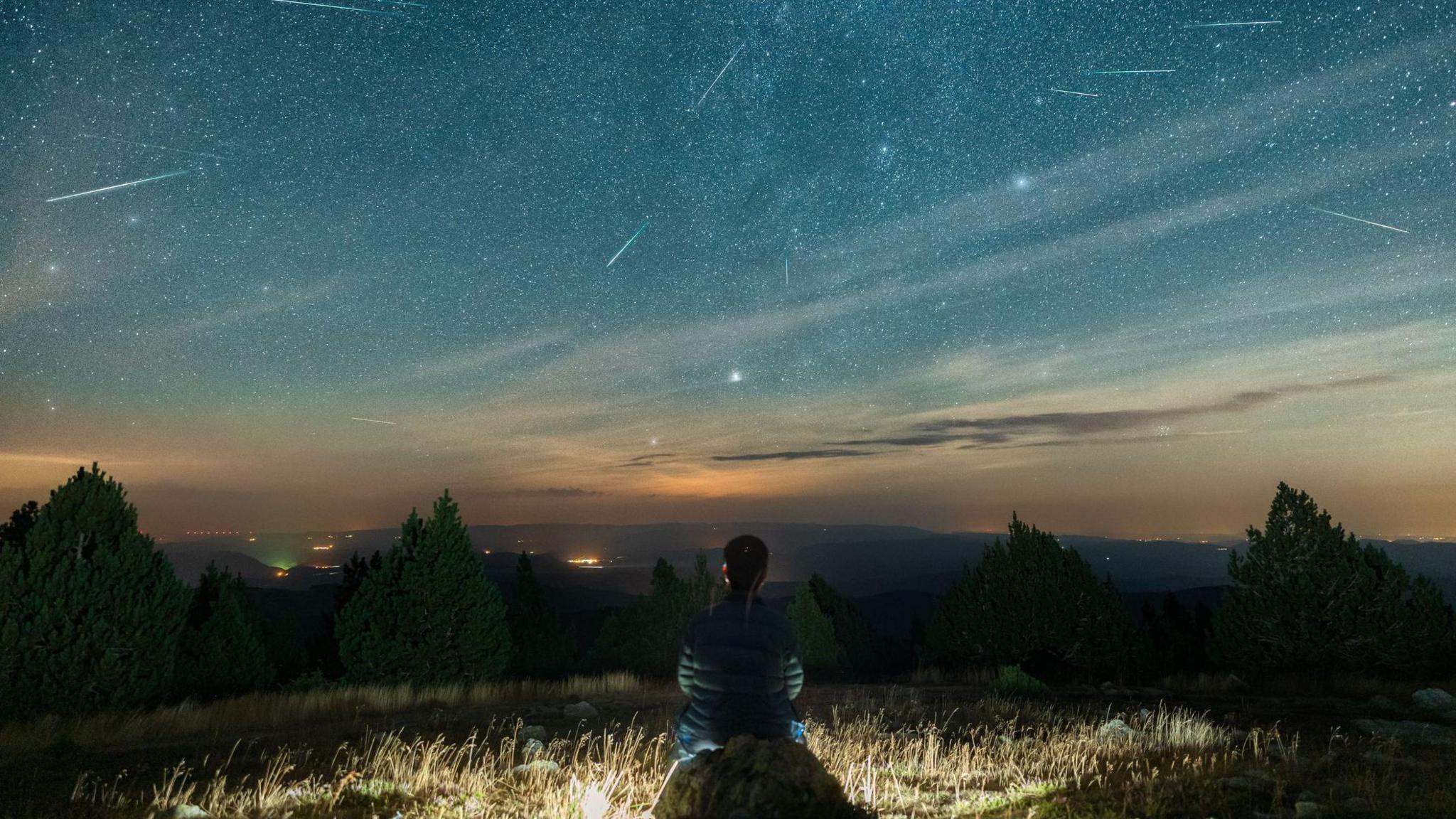Alpha Capricornids meteor shower: How to watch in the UK

From 3 July - 15 August you could spot the Alpha Capricornids meteor shower in our skies
- Published
Have you ever seen a meteor shower? If not, this summer could be your chance.
From 3 July to 15 August you might be able to spot the Alpha Capricornids meteor shower in our skies, with the shower producing its peak rate of meteors on 30 July.
There are usually several opportunities to see meteor showers in the UK throughout the year.
Read on to find out how to spot the Capricornids and others in the future.
- Published13 February 2023
- Published10 July
What is a meteor and meteor shower?

Some people call meteor showers shooting stars, but they aren't really stars, just tiny chunks of rock burning up in the Earth's atmosphere.
Meteors or meteoroids are small pieces of space debris or rock that fall towards Earth's atmosphere where they burn up.
As the space rock falls towards Earth the resistance of it makes it extremely hot.
This produces a bright streak of glowing hot air behind it. So, what we see isn't actually the falling rock - it's the glowing heat around it - racing across the sky.
When Earth encounters many meteoroids at once, we call it a meteor shower.
How can I see the Alpha Capricornids Meteor Shower?

Meteor showers are named for the constellation where the meteors appear to be coming from.
For example, the meteor shower happening this month is the Alpha Capricornids meteor shower, as this is the constellation that the meteor appears to be coming from.
To see a meteor shower you don't need any special equipment, but a pair of binoculars can help.
The best time to spot this shower will be after midnight on or around 30 July.
Top tips on spotting meteor showers
Beginner's guide to astronomy
As mentioned you can see the shooting stars with the naked eye, so you won't need any special equipment.
For the best chance to spot a meteor shower you should find a location with minimal light pollution.
If possible it is better to go away from urban areas where the light pollution from buildings, car headlights, street lamps and neon signs can cause too much glare.
Wrap up warm and bring a chair and some thick blankets so you can sit or lie down and look up for long periods without getting neck strain, or getting too chilly.
Good luck, stargazers!
